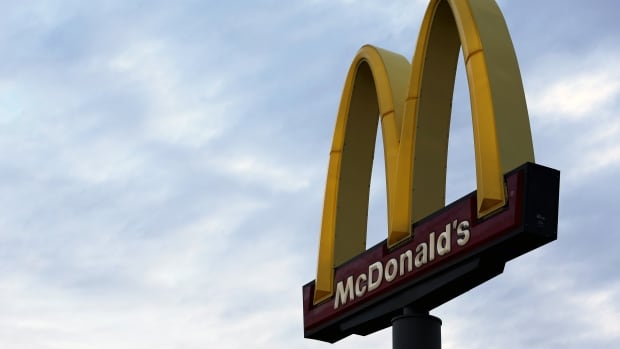McDonald’s worked Wednesday to reassure customers that its U.S. restaurants are safe as federal investigators tried to pinpoint the cause of a deadly E. coli outbreak linked to the fast-food giant’s Quarter Pounder hamburgers.
McDonald’s pulled Quarter Pounders from one-fifth of its U.S. stores Tuesday as a result of the outbreak, which the U.S. Centers for Disease Control and Prevention (CDC) said had sickened at least 49 people in 10 states. One person died and 10 were hospitalized, according to the CDC.
A preliminary investigation by the U.S. Food and Drug Administration suggested fresh slivered onions that are served raw on Quarter Pounder hamburgers were a likely source of the contamination.
McDonald’s also serves raw, slivered onions on one of its breakfast sandwiches, but that sandwich isn’t available at the impacted stores. Other burgers, like the Big Mac, use diced, cooked onions. McDonald’s said it was searching for a new regional supplier for fresh onions.
Burger off menu in 12 states
In the meantime, Quarter Pounders were removed from menus in Colorado, Kansas, Utah, Wyoming and portions of Idaho, Iowa, Missouri, Montana, Nebraska, Nevada, New Mexico and Oklahoma.
Adriean Madden pulled up outside a McDonald’s outside Denver on Wednesday for his usual afternoon snack but then decided against it. He said he was unsure how E. coli spreads or contaminates other foods, and he thinks McDonald’s should be more forthcoming.
“This affects my decision with coming to McDonald’s in the future,” Madden said. “I feel like the information isn’t as widely spread. I didn’t see any notices on the door, and then I saw vehicles going through the drive through just as if nothing was going on.”

Colorado has had the most reported cases of any state so far, and it’s where the one death involving an older adult occurred.
McDonald’s said it has worked closely with federal food safety regulators since late last week, when it was alerted to the potential outbreak. The company said the scope of the problem and the popularity of its products have complicated efforts to identify the contamination source.
Stringent guidelines
McDonald’s has more than 14,000 U.S. stores and serves one million Quarter Pounders every two weeks in the affected 12-state area.
McDonald’s is known for its stringent food safety guidelines and protocols, said Chris Gaulke, a professor of food and beverage management at Cornell University’s Nolan School of Hotel Administration. The company said Wednesday that the supplier regularly tested its onions for E. coli, for example.

“Given the volume of food that they go through, how infrequently this happens to McDonald’s is a testament to the effort that they take,” Gaulke said.
But some observers questioned why McDonald’s simply stopped selling one sandwich and didn’t close restaurants for further investigation.
“Good practice would have been to close all the restaurants,” said Bill Marler, a Seattle lawyer who has sued companies over food poisoning outbreaks.
“Until we know definitively what the product was that made people sick, consumers should be aware.”
Marler said cross-contamination remains a potential possibility at the affected restaurants until they are thoroughly cleaned.
Asked why it didn’t close any restaurants, McDonald’s said nothing in the government’s investigation indicated there were issues with its food preparation practices. In an interview on NBC’s Today show Wednesday, McDonald’s U.S. President Joe Erlinger also said it’s likely that whatever product was contaminated has already passed through the company’s supply chain.
The CDC reported the outbreak late Tuesday. It said infections were reported between Sept. 27 and Oct. 11 in Colorado, Iowa, Kansas, Missouri, Montana, Nebraska, Oregon, Utah, Wisconsin and Wyoming.
State and local public health officials were interviewing people about the foods they ate in the week before they got sick. Of the 18 people interviewed as of Tuesday, all reported eating at McDonald’s, and 16 people reported eating a beef hamburger. Twelve reported eating a Quarter Pounder.

McDonald’s said it’s unlikely the beef in the Quarter Pounder was the source, since it comes from multiple suppliers and is cooked at a high enough temperature to kill E. coli.
McDonald’s said its initial findings suggest that some of the reported illnesses were linked to onions from a single supplier, which the company didn’t name. McDonald’s said the onions are cleaned and sliced by the supplier and then packaged for use on individual Quarter Pounders.
The incubation period for E. coli is only a couple of days, so illness would be quickly apparent to anyone affected, said Donald Schaffner, a food safety expert at Rutgers University.
“If you ate these burgers in September and now it’s the middle of October and you didn’t get sick, you’re probably OK,” he said.
E. coli bacteria are harboured in the guts of animals and found in the environment. Infections can cause severe illness, including fever, stomach cramps and bloody diarrhea. People who develop symptoms of E. coli poisoning should seek health care immediately and tell the provider what they ate.


